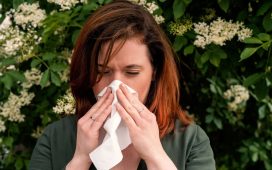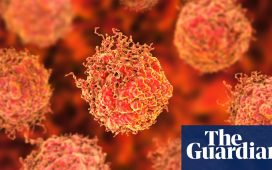
Some authorities in England have seen up to a 500 per cent increase in STI rates over the past year, analysis shows.
York saw the biggest jump in gonorrhoea cases between 2021 and 2022.
Meanwhile, South Tyneside and Torbay took first place for syphilis and chlamydia, respectively.
MailOnline has packaged the full set of data into a fascinating interactive map that shows the situation in every area of England.
It comes after health authorities in Europe yesterday warned of a similar spike in STIs.
Covid lockdown rules effectively put a stop to casual sex, leading to a drop in STI transmission during the pandemic.
Experts suspect this was then followed by a post-lockdown boom in people having condomless sex with new or casual partners.
Data analysed by the Local Government Association shows Lambeth in London is the nation’s clap capital.
The borough, home to Brixton and parts of Clapham, recorded 1,220.5 cases of gonorrhoea per 100,000 people in 2022.
This the equivalent of around one in 100 people testing positive for the bug.
Real figures are likely to be higher because not everyone who catches the STO will get tested. Additionally, some people may also catch the disease more than once.
But York saw the biggest jump, recording a 380 per cent increase in the space of a year.
Only two of 152 local authorities — Sandwell and Reading — saw rates go down year on year.
Gonorrhoea is usually spread through contact with infected sexual fluids. The bacteria can infect the cervix, urethra, rectum, throat or eyes.
It is typically passed through unprotected vaginal, oral or anal sex, as well as the sharing of sex toys similarly used without a condom.
Symptoms of gonorrhoea usually trigger within two weeks of infections and include unusual discharge from the genitals and a burning sensation when urinating.
But experts warn one in 10 men and half of women will not experience any obvious symptoms, meaning they can be silent spreaders of the STI.
Left untreated it can cause infertility and, although rare, life-threatening sepsis.
Syphilis rates have also shot up, with the City of London recording the highest rate in the country (324.9 cases per 100,000 people).
South Tyneside, southeast of the city of Newcastle upon Tyne, recorded the biggest yearly case growth.
Rates shot up 510 per cent to 12.1 cases per 100,000 people in 2022, up from just 2 cases per 100,000 people the year before.
Syphilis typically causes small sores to develop on or around the genitals and/or anus, and white warty growths in the same areas.
It usually takes three weeks from infection to develop symptoms from infection.
Left untreated it can cause extremely serious and life-threatening health problems, harming the function of the heart, brain, nerves and other organs.
About two-thirds of local areas in England saw an increase in syphilis rates in 2022.
The City of London also was the country’s chlamydia capital for 2022, with 1,531.7 cases per 100,000 people.
But Torbay, in the South West, took the crown for biggest year-on-year increase, with rates soaring by 131.5 per cent.
Chlamydia is considered one of the most common STIs in the UK, in part because most people don’t show any symptoms and therefore don’t get tested.
Symptoms, when they do occur, can include pain while peeing. Women might also have pain in the tummy and bleed after sex or between periods.
Men, in addition to pain while urinating, can also experience pain and swelling in the testicles as symptom.
Left untreated, chlamydia can cause infertility in women and cause a painful inflammation of the tubes that carry sperm from the testicles called epididymitis.
It can also cause a temporary form of arthritis in both sexes.
Only a dozen local authorities in England recorded a drop in chlamydia rates in 2022, but not all logged figures.
STI figures were collected by the Government’s Office of Health Disparities and analysed by the Local Government Association (LGA).
Earlier this year LGA raised the alarm about the scale of the problem sexual health services in England are facing.
Many sexual health services in England are funded through public health grants.
However, the LGA says these grants have been reduced in real-terms by £880million over nearly a decade compromising their ability to support sexual health services.
The best way to determine if you have an STI is contact your GP or an NHS sexual health clinic for a free test.
Some local areas offer free STI screening kits that are sent out in the post, though access to these varies.
Most STIs are easily treatable through a course of medications like antibiotics but the danger is people may not experience any symptoms indicating they are infected, potentially spreading the disease further.











